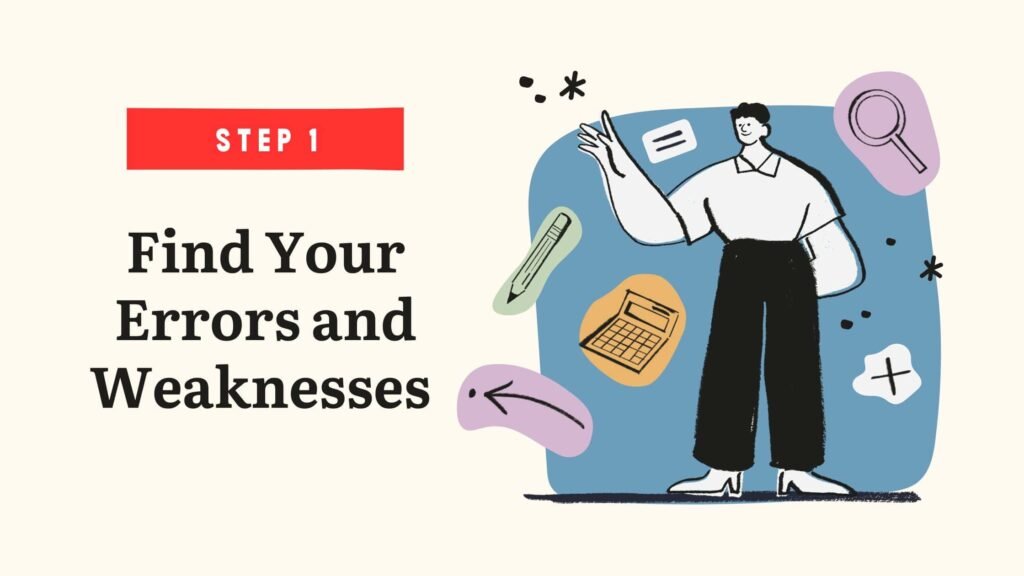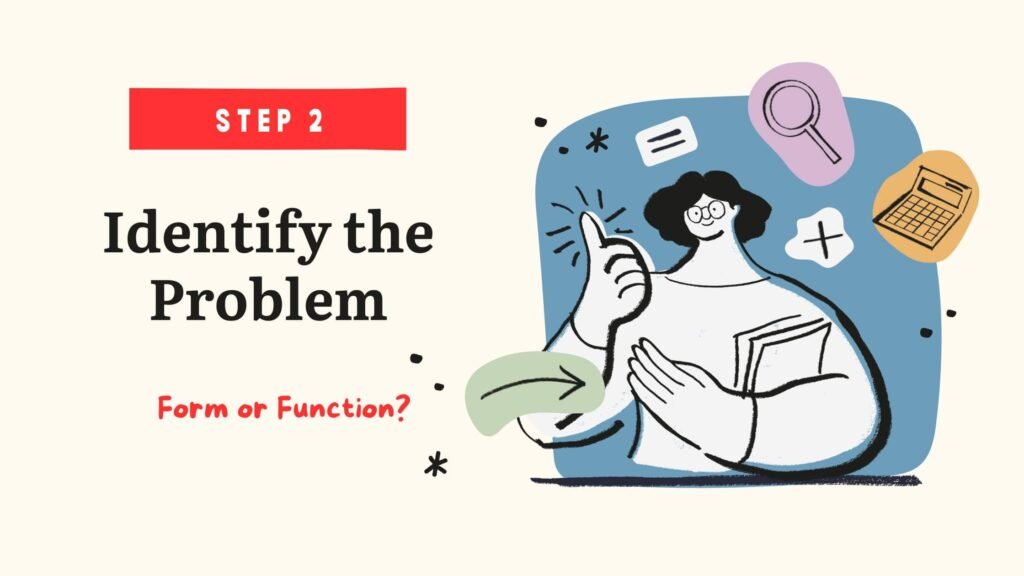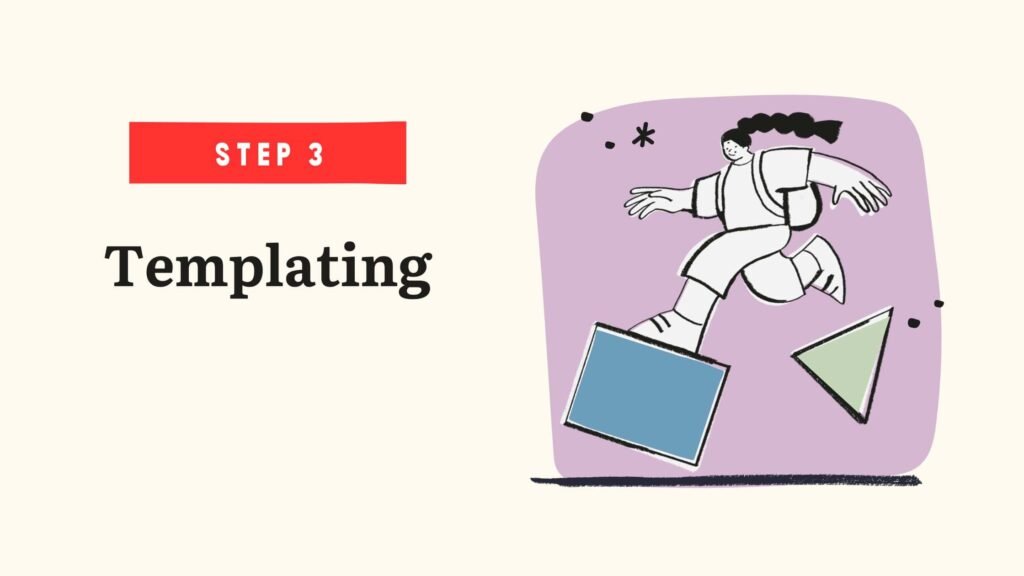In this lesson, you can learn how to be good in English grammar. To some people, ‘grammar’ is kind of a dirty word. It probably makes you think of boring textbooks, boring exercises, and boring lessons. Maybe you think, “Why do I need grammar? I just want to communicate.” But, here’s the thing: grammar isn’t just something in a book.
Grammar is how you connect words into phrases, and phrases into sentences. Every time you connect two words, you’re using grammar. Even now, you’re using grammar to understand what we’re saying.
We think there’s a better way to learn English grammar than just doing endless exercises. In this lesson, you’ll see a step-by-step, practical plan to improve your English grammar in any area. To work on grammar, it’s a good idea to have a book for reference. One of the most popular is English Grammar in Use by Raymond Murphy.
How to be Good in English Grammar – 4 Steps
So, let’s start: you want to improve your English grammar. What should you do first?
- Step 1: Find Your Errors and Weaknesses
- Step 2: Identify the Problem: Form or Function?
- Step 3: Templating
- Step 4: Make Digital Flashcards
Step 1: Find Your Errors and Weaknesses

‘English grammar’ is not just one topic. It’s tens of major topics, and each of those contains tens of smaller topics. So, you need to know where to begin. You need to set goals and establish priorities for your studies. How can you do that?
Make List
Let’s start with five things. Make a list of five errors or grammar problems you have. Maybe, you already know some errors you make. Maybe your teacher corrects you or your classmates often, and you have an idea.
A good way to do this is through writing. Write something for your teacher, and ask them to highlight and correct your grammar mistakes. See which mistakes you make most often. If you aren’t studying with a teacher, what can you do? This can be more difficult.
- One suggestion: use a grammar book which has exercises and an answer key. Choose five topics which you think you will find difficult. Do the exercises and check your answers. If you made a lot of mistakes, then you know you need to do more work on these topics.
- Here’s another suggestion: find a reading text, for example a news article online. Make sure the text is not too difficult for you. Read the text two to three times. Next, try to rewrite the text without looking at it. Don’t worry about getting it perfect; just do your best. Afterwards, compare your text with the original. Where did you make mistakes? Did you make mistakes with verb forms? With adverbs? Word order? This should show you where some of your grammar mistakes are.
Okay, hopefully now you have a list of five grammar errors or weaknesses. It could look like this:
- Using the present perfect
- Word order in questions
- Using commas correctly
- Mixing up adjectives and adverbs
- Prepositions after adjectives
Be as specific as you can with your list. Writing something like ‘verbs’ or ‘prepositions’ isn’t really helpful. Now, you have your list. What’s next? [How to be GOOD in English Grammar]
Step 2: Identify the Problem: Form or Function?

If you have a problem with a grammar topic, there can be two basic reasons: form or function. The first possibility is that you don’t know how to form a structure correctly. For example, think about the present perfect verb tense: I have done… To form the present perfect, you need to know several things, such as:
- Use ‘have’ or ‘has’ plus a past participle
- Make negatives with ‘haven’t’ or ‘hasn’t’
- Make questions by moving ‘have’ or ‘has’ before the subject
If you don’t know these rules well, you might make mistakes like these (using the present perfect – form):
- She have been to Cambodia.
- I don’t have finished.
- How long they have lived here?
Can you correct these mistakes?
Answers:
- She has to Cambodia.
- I haven’t finished.
- How long have they lived here?
Often, problems with form are habits. You say and write the wrong sentence hundreds of times, and then it’s hard to change it. The only way to correct these habits is to repeat and review the correct form many, many times. The best way to do that? Use a flashcard app like Quizlet. We’ll talk about this in more detail later.
Or, maybe you don’t know the correct form. If so, use your grammar book to check. Problems with form are simpler to understand, but sometimes they take a long time to fix, especially if your mistakes have become deep habits. You heard before that there are two basic reasons you could have problems with a grammar topic.
What’s the other? The other possibility is that you don’t understand the function. What does that mean? ‘Function’ means how a grammar structure is used, and what meaning it has. For example, think again about the present perfect verb tense.
To use the present perfect correctly, you need to know things like:
- Use the present perfect to talk about states that started in the past and are still true now.
- Don’t use the present perfect to talk about finished times in the past.
- Use the present perfect to talk about life experiences when you don’t specify a time.
Of course, there are more! These are just examples.
If you don’t understand these rules, you might make mistakes like these:
- I am living here since four years.
- We have had lunch three hours ago.
- Have you ever been to Japan last year?
Can you correct these mistakes?
Answers:
- I have lived here for four years.
- We
havehad lunch three hours ago. - Have you ever been to Japan
last year?
Often, problems with function are problems with translation. Maybe your language doesn’t have this grammar structure, or maybe your language expresses these ideas in a different way. If you have problems with the function of a grammar structure, what can you do?
First, check the rules in your grammar book and try to find example sentences. Think about how you would express the same ideas in your language. Secondly, think about how this grammar works in your language. Do you have the same structure? Do you use it in the same way?
The most difficult grammar topics will often be things that don’t exist in your language. For example, many languages don’t have an exact equivalent to the present perfect in English, which is why so many English learners find this verb tense particularly difficult. However, thinking about the differences between your language and English can help to make things clearer. [how to be good in english grammar]
Okay, so now you’ve found your mistakes and thought about where they come from.
Students Also Read: Why, What, How & Tips: Learn Basic English Grammar
Step 3: Templating

You’re going to see one of the most powerful learning tools you can use. Even better, it’s simple! Anyone can use it. It’s called templating. Templating means you take part of a sentence, and finish it in different ways. Let’s stick with the example of the present perfect. Here’s an unfinished sentence: I have never… Your job is to finish the sentence in five different ways. Make them as different as possible. Here’s one example:
- I have never eaten a snake.
Can you make one or two more? Think about it now. You could make sentences like:
- I have never been to New Zealand.
- I have never seen ‘Titanic’.
Try to make sentences which are true for you. This way, they’ll be more meaningful and easier to remember. Let’s look at some more templates you could use to practice the present perfect:
- I have … this week.
- I haven’t … yet today.
- … have/has been living … for …
- I’ve been … recently.
- My … has … since …
Can you see how you could complete these templates? Think about it. Take a moment and complete template sentences. [how to be good in english grammar]
Let’s see some possibilities:
- I’ve watched this video three times this week.
- I haven’t had coffee yet today.
- My sister has been living in Milan for three years.
- I’ve been reading a lot of Chekhov recently.
- My wife has been a doctor since 2005.
Of course, these are just suggestions! You should write sentences that are true for you. Also, remember that you should try to write five sentences for each template. If you can’t think of five, write as many as you can. You can use this to practice any grammar topic. For example, here are three templates you could use to practice using must have to, and should:
- At work, we mustn’t …
- Tomorrow, I have to …
- If you want to learn English quickly, you should …
Here are three templates you could use to practice talking about the future:
- Tonight, I’m …
- For my next vacation, we’re going to …
- Next year, I hope I’ll …
You see, you can use this to practice anything.
Why should you use this method? What makes it so powerful? It’s powerful because you’re learning grammar through real-life examples. Also, you’re learning grammar in full sentences. Finally, this lets you practice your vocabulary, too!
You have one more thing to do here. You need to make sure your templated sentences are correct. You’re going to use these templates to practice and learn. If you make any mistakes in your sentences, you’ll just create bad habits which will be difficult to change in the future. So, ask your teacher, ask a friend, or ask on an online forum. Make sure your sentences are correct. Now, you’re ready for step four. [how to be good in english grammar]
Step 4: Make Digital Flashcards

Flashcard apps like Quizlet or Anki are a great way to review and remember grammar when you’re learning English. Both of these apps are mostly free to use, although the Anki app for IoS costs money. Our staff and our students have had good results with both these apps. There are others available, and you should probably try different ones and see which one you like best!
So, why do you need an app like this? Using a flashcard app will help you to remember more of what you study and practice. that’s how you can do it:
First, you can make questions using your template sentences Put one or two gaps in a sentence and make a question, like this:
- I _______had coffee ________ today. (Template)
- I haven’t had coffee yet today. (Answer)
You can also make a question with a mistake which you make frequently. The answer is the corrected sentence. For example:
- Correct the mistake: I just have had a shower.
Can you correct the mistake?
- Answer: I’ve just had a shower.
The word order was wrong. Put the correct sentence as your answer. So, there are two kinds of cards you can make: gapped sentences and error correction.
You can make gapped sentence cards easier or harder by leaving out different numbers of words. For example:
- My sister has ______ _______ in Milan for three years.
- My sister______ _______ __________ ________ ___________ ________ ___________ three years.
You might be thinking: this sounds like a lot of work! Do I really have to make my own cards? Do I have to do this for every grammar topic I study? The answer is, no, you don’t have to, but you should. Here’s why:
First, you should make your own cards so that you’re using your own examples. Your own examples should mean something to you. They’re real; they’re about you and your life. This makes them easier to remember. Secondly, you should spend the time to make your own cards because it will save you time later. If you review efficiently, you can remember seventy to 80% of what you learn. If you don’t, you’ll forget most of what you study, and then you’ll have to do it again in the future.
So, spending time now will save you a lot more time in the future. Not only that: isn’t it frustrating when you can’t remember something you’ve studied tens of times? It’s demotivating, and that’s a problem. You need to be motivated to learn English! Using flashcards and templating will help you to remember more of what you study. This will give you motivation because you’ll feel that you’re making more progress.
Review Cards
Finally, make sure you review your cards every day, or as often as possible. Review your cards when you have a spare moment during the day. For example, do them before you get up in the morning, or on the subway to work, or during a break.
Conclusion:
Now, you have a four-step process to improve your English grammar:
- Step one: identify and write down your weaknesses. Start with five topics maximum. The topics you write down should be as specific as possible.
- Step two: identify the mistakes you make and the problems you have. Do you have problems with the form, or the function, or both? Use a grammar book to check, or ask a teacher.
- Step three: make templates, and write five full sentences for each template. The sentences should be real: write true sentences about you and your life. Check your sentences carefully and make sure they’re correct.
- Step four: take your sentences and make them into flashcards. You can make gapped sentences or error correction questions. Review your cards regularly.
And that’s all! Use these tools, and you can learn anything you want to efficiently. Tell us: what’s the first grammar topic you’re going to review? Let us know in the comments, and we can see if you have similar ideas or not! [how to be good in english grammar]
Students Also Read: 73 CoMmOn eNgLiSh gRaMmAr mIsTaKeS AnD HoW To aVoId tHeM